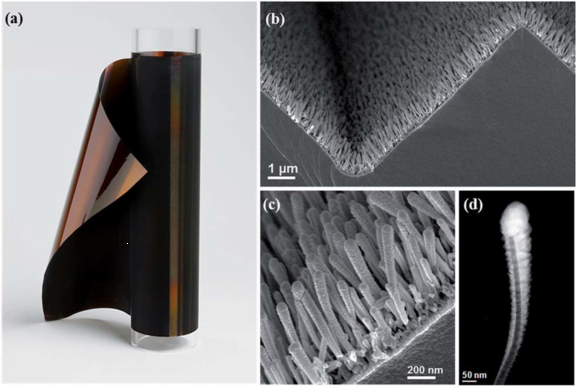报告题目:第一性原理计算及材料基因组工程基础上的燃料电池催化剂优化Computation Guided Optimization of Electrocatalysts for Proton-exchange membrane (PEM) Fuel Cells
主讲人:曾振华 教授(美国普渡大学)
时间:2019年12月26日下午3:00
地点:机械与运载工程学院316报告厅
主讲人简介:曾振华博士为湖南大学应用物理专业1999级本科生,2003年免试推荐为湖南大学材料物理专业硕士生(导师为邓辉球教授),2010年在中科院大连化物所获博士学位(导师为李微雪研究员)。博士毕业后,先后在丹麦技术大学、美国阿贡国家实验室和普渡大学进行燃料电池、电解中电催化机理、电催化剂表面与界面特性的第一性原理研究,取得了一系列创新性的研究成果,在Science、Nature Energy等国际著名学术刊物上发表多篇第一作者和通讯作者论文。
报告摘要: 本报告将主要介绍报告人所参与的美国能源部项目“第一性原理计算及材料基因组工程基础上的燃料电池催化剂优化”的最新进展。本项目由美国能源部燃料电池基础办公室和3M公司共同资助,由3M公司、阿贡国家实验室、橡树岭国家实验室、约翰霍普金斯大学和普渡大学共同参与。项的目的是优化3M公司所开发的独特纳米结构基础上的PtNi和PtNiIr氧还原催化剂(见下图)。报告将介绍如何通过优化催化剂体相及表面组分及结构来显著改善催化剂的本征活性和质量活性。本项目所优化的催化剂在商业全电池的性能已经全面超过美国能源部2020年目标。最后,报告人还将介绍最近启动的丰田汽车(北美) 燃料电池项目以及初步进展,本项目的目的是通过基础研究来发展新感念和方法,从而实现丰田汽车商用燃料电池中期(2030-2040)和长期(2040-)目标。
|
|
|

|
|
|
|

|
By May 14, 2019, thegreenhouse gasCO2 level in our atmosphere has hit the highest level ever recorded in the last 800,000 years — since before our human being evolved. The pressing climate change calls for a rapid shift of society from fossil fuel to clean energy, among which hydrogen energy is an important option to power our vehicles through fuel cells. One key barrier for the widespread adoption of fuel cell vehicles is the need for platinum-based catalysts and the sluggish oxygen reduction reaction (ORR) on the cathodes of proton-exchange membrane (PEM) fuel cells. Thus, it has been a long-standing goal to continually improve the efficiency of the ORR, and one promising approach is though computation guided optimization of electrocatalysts.
Inthis talk, I will review our recent effort toward computation guided optimization of ultrathin film (UTF) PtNi and PtNiIr oxygen reduction reaction electrocatalysts through first-principles based calculations: a joint project between 3M, Argonne National Laboratory, Oak Ridge National Laboratory, Johns Hopkins University and Purdue University that is supported by U.S. Department of Energy Fuel Cell Technologies Office. I will show that significant improvements in electrocatalyst mass and specific activities have been achieved through the optimization of electrocatalyst bulk and surface compositions and structures. Membrane electrode assemblies that incorporate UTF PtNi and PtNiIr cathode catalysts have demonstrated performance and durability which approach or exceed several U.S. Department of Energy 2020 performance, durability, and platinum group metal content targets.
If time permits, I will also introduce our recent effort toward computation guided optimization of the next-generation fuel cell electrocatalysts, i.e. Toyota 2030 and 2040 targets.